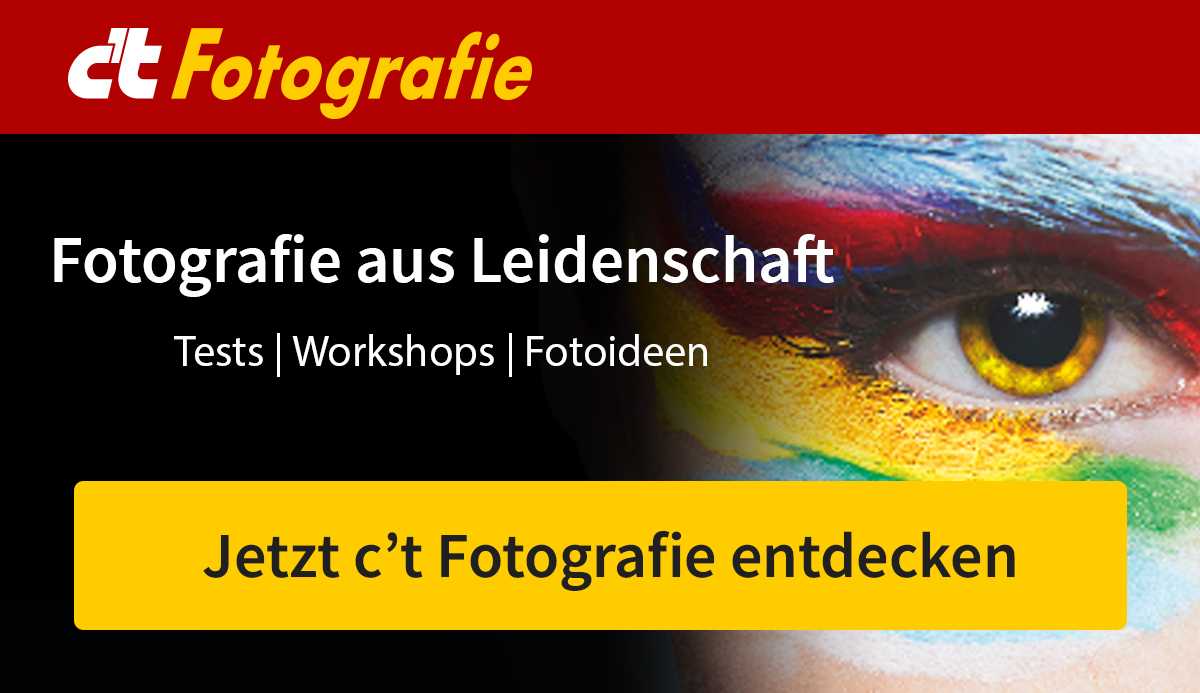The RAW Photo Triennale will take place from March 18 to June 11, 2023. It is the fourth edition of the photo festival (after 2015, 2016 and 2020) in the artists’ village of Worpswede, 20 kilometers north of Bremen.
The main theme of this year’s festival is “Turning Point. Turning World”. It deals with the urgent questions and problems of our time – from political protests and revolutions to questions of migration and identity to environmental problems. The festival shows numerous photographic works with political, social or ecological themes. It’s about changes, breaks and crises that are omnipresent and make up our time. The topic comes to mind, because the world seems to be on one Turning Point to be located.
The curatorial team of three curators has jointly developed an exhibition concept that presents four main exhibitions at four different locations in Worpswede on the following key terms:
#RISK – Political and social issues such as protests, climate change, migration and war are shown here (Location: Great Art Show Worpswede)
#FAKE – Truthfulness and deception in photography – the boundaries between fiction and reality are negotiated in this exhibition (Location: Worpsweder Kunsthalle)
#EGO – Questions of identity and belonging are negotiated here with photographic self-images and images of others (location: Haus im Schluh)
#NEXT – Environment – Nature – Future. How can photographic/art work address and show the major socio-environmental issues? (Location: Barkenhoff, Heinrich Vogler Museum)
A total of 22 photographic or artistic positions from 14 different countries can be seen in the four main exhibitions, some of them for the first time in Germany. Among them are a total of 17 male and seven female photographers. So the whole festival is not only more conceptual than in previous years, but also much more international and feminine.
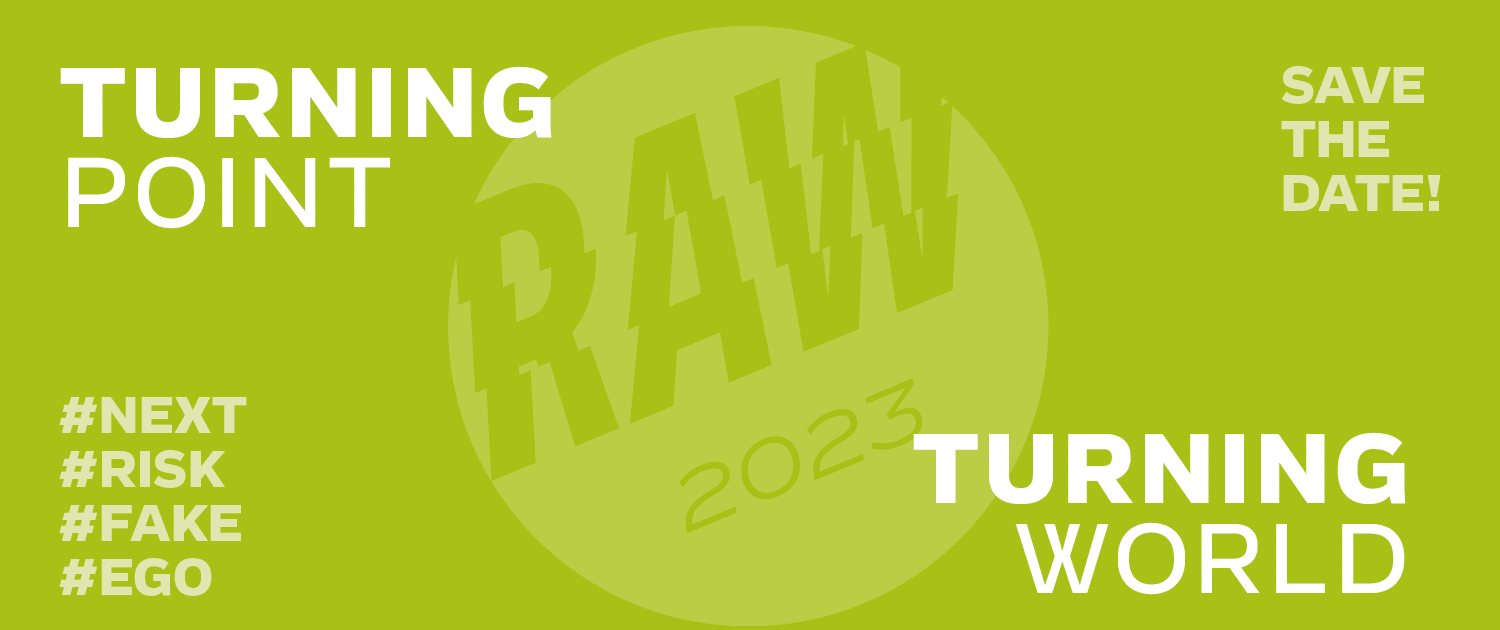
opening weekend on 18./19. March 2023
RAW Festivalwochen March 18th to April 2nd
Annual theme: Turning Point.Turning World
Four exhibitions at four different locations in Worpswede on the key terms:
#EGO (house in the gorge)
#FAKE (Worpswede art gallery)
#NEXT (Barkenhoff, Heinrich Vogler Museum)
#RISK (Large Art Show Worpswede)
They all run from March 18th to June 11th
Furthermore, it is called RAWPLUS five other special exhibitions provide information on the key terms:
#PHOTOBOOKS (Philine-Vogler-Haus, Tourist Information, from March 18 to April 2)
#THANKS (Marcusheide, from March 18th to June 11th)
#REVERSIBILITY (Gallery Old Town Hall, March 18th to May 1st)
#WE_LOVE (New Worpsweder Kunstverein, from May 1st to June 11th)
#PASSAGE Passage Markusheide-Berkenhoff, from March 18th to June 11th)
The detailed Program for the events of the Raw festival weeks, see here. It includes rounds of talks, tours of the exhibitions, lectures, film screenings and, on April 1st and 2nd, the Worpswede photo fair that concludes the event.
Tickets: €19 (reduced €12.50), festival pass €35 (reduced €25)
Contact: Worpswede Tourist Information, Bergstraße 13, Tel.: 0 47 92 / 93 59 20
We were there for a preview and would like to present our highlights from the four exhibitions to you at the opening on March 18:
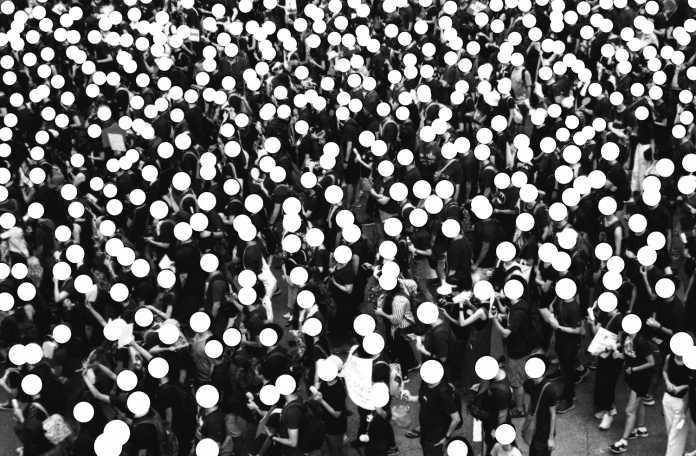
Harcourt Road, from the series Clean Hong Kong Action, 2019
(Bild: © Siu Wai Hang)
#RISK
On the guiding concept of #RISK, curator Julia Bunnemann seven different photographers selected. The subject of risk is usually associated with men, but here, with the exception of one, only female positions are dedicated to the subject photographically – some of which are being exhibited for the first time. Themes such as migration, armed conflicts and political protests play a crucial role in the exhibition.
A particularly interesting position represents the work Clean Hong Kong Action (2019) des Hong Kong Photographer Siu Wai Hang In 2019 he documented the major democratic protests in his hometown with photographs. However, since for many demonstrators the photographic image – against the background of the authoritarian Chinese regime – can lead to denunciation, he decided to cut out all faces in his pictures to protect the people. He prints his photos in large format on acrylic and neatly cuts out the faces with a laser.
These works are a highlight of the #RISK exhibition because they are not only visually exciting – the white dots not only give the black and white photos a graphic-aesthetic dimension, they are also critical of the media. Because Hang’s photos ask how photography can meet this political context artistically at all.
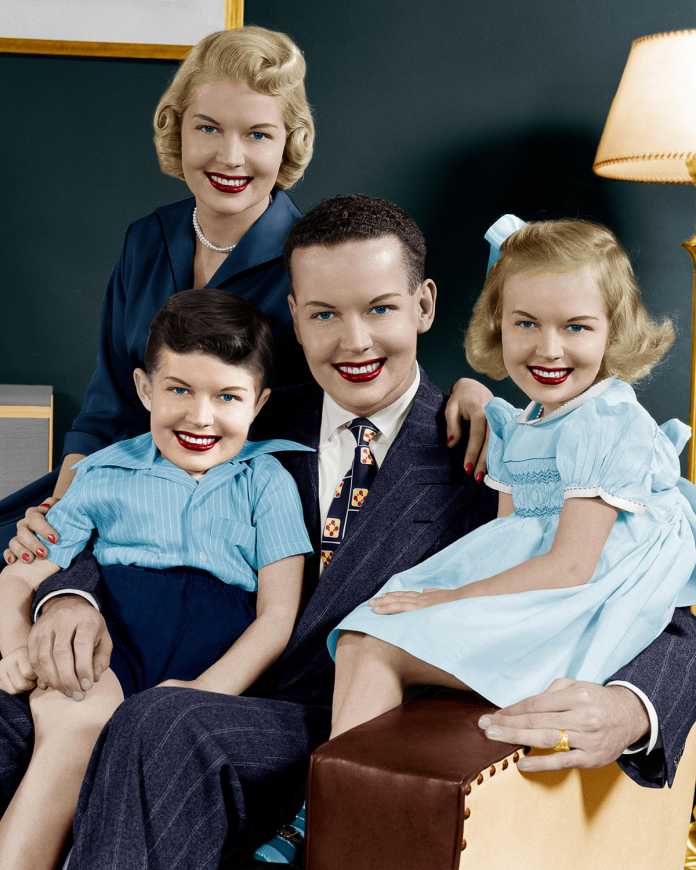
Untitled #23, from the series Traces, 2015-2017
(Image: © Weronika Gęsicka and Unit Gallery)
#FAKE
Even if you immediately think of fake news and the American ex-president, this is about something else. curator Wolfgang Zuborn with #FAKE is dedicated to contemporary people and how they consume or have to consume more and more images. Although photography is supposed to be an image of reality, it is always constructed at the same time. There are numerous influences on our reality – social, cultural, political, psychological and so on. Photos can produce “fake” at the same time, but also expose “fake”. Ultimately, it is about the processing of images and media competence
This is particularly beautiful and entertaining in the pictures of the Polish photographer Weronicka Gęzigzag. for her series Traces (2015 – 2017) she acquired old photographs from the 1940s and 1950s from an image database. They are everyday scenes: family photos, snapshots or holiday pictures. We don’t know what is behind the pictures, who the people are and whether they are posed. In addition, Gęsicka processes the photos further so that, for example, people appear in a different context or faces are duplicated. Ultimately, the viewer no longer knows what is real and what is fake. A peculiar in-between world between truthfulness and fiction is created in and through the images.
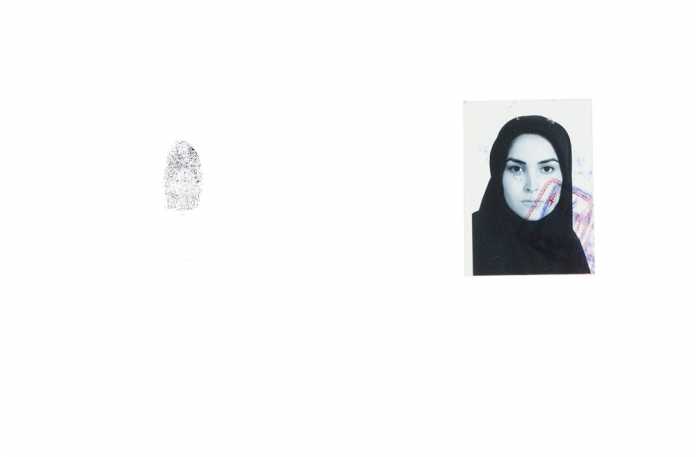
Image from the Shenasnameh series, 2010-2016
(Image: © Amak Mahmoodian)
#EGO
For the #EGO exhibition, the two curators Daria Bona and cale garrido teamed up. The result of their collaboration is a photo show dedicated to the theme of identity and photographically asking how living between cultures and places affects personal development.
The highlight of the #EGO exhibition is the work of Mother Mahmoodian. The Iranian artist has established herself in Shenasnameh (2016) dealt with the image of women and their political control. In Iran, the image of the official birth certificate (Shenasnameh) must be renewed every ten years. During an appointment with the local Citizens’ Registration Office, the artist noticed that her photo was becoming increasingly similar to that of her mother, and that these portraits with headscarves are intended to hide something that the mullah regime does not like, namely femininity.
For her series, Mahmoodian collected official passport photos and fingerprints of other women from Iran and hung the passport-sized formats next to each other so that if you look closely, you can see the difference and individuality of the women. It also shows two passport photos rejected by the authorities because of strands of hair on their faces or excessive make-up. In this way, the artist subverts the rigid pictorial regime of the mullahs. It shows how important it is to make female positions visible and female voices against the regime audible.

(Image: © Alex Grein and Gallery Gisela Clement, Bonn )
#NEXT
Also have for the #NEXT exhibition Daria Bona and cale garrido worked together as curators. They are concerned with the simple but crucial question about the future – what comes next? Against the background of the impending climate catastrophe, the environment/nature and socio-ecological issues play a central role in the exhibition. How can emotions make a difference in this abstract scientific topic? How can photographers deal with the subject artistically?
A very interesting position is the video work by the German artist Alex Grein: She placed specimens of different butterflies on a tablet display, underlaid Google Maps and filmed both. In this way, the viewer can visually follow the butterfly’s journey from an arbitrary starting point back to its native territory, such as Peru. On this video journey you can see brown coal areas in the Rhineland, greenhouses in southern Spain or other man-made and destroyed landscapes – different 2D and 3D views alternate.
With her video work, Grein shows in a visually very interesting way how the scientific colonialism of Europe can be traced back, but also what effects the ongoing exploitation of nature and the environment by humans has.
You can find more impressions of the RAW Photo Triennale in Worpswede in our photo gallery:


(vat)

